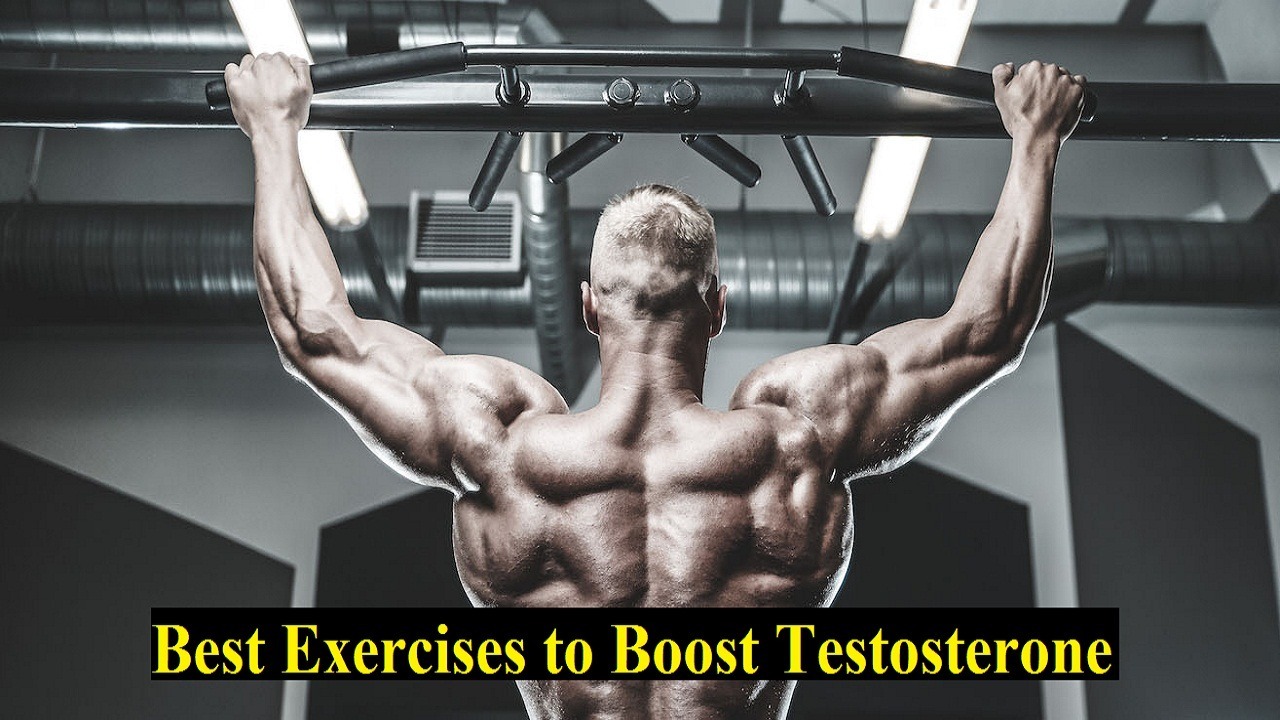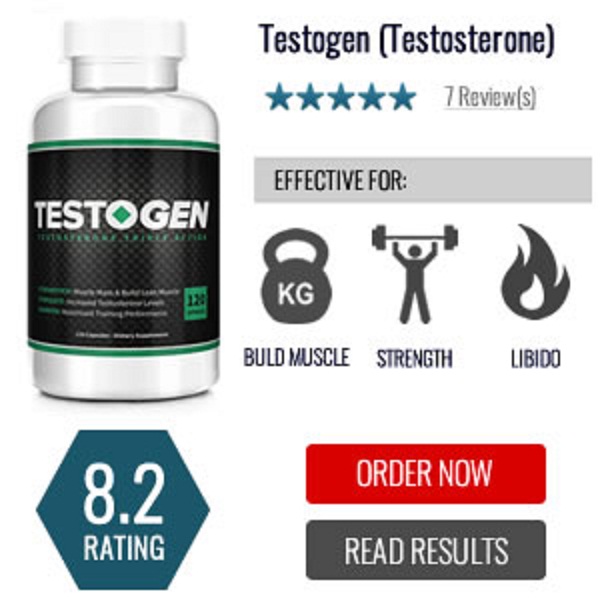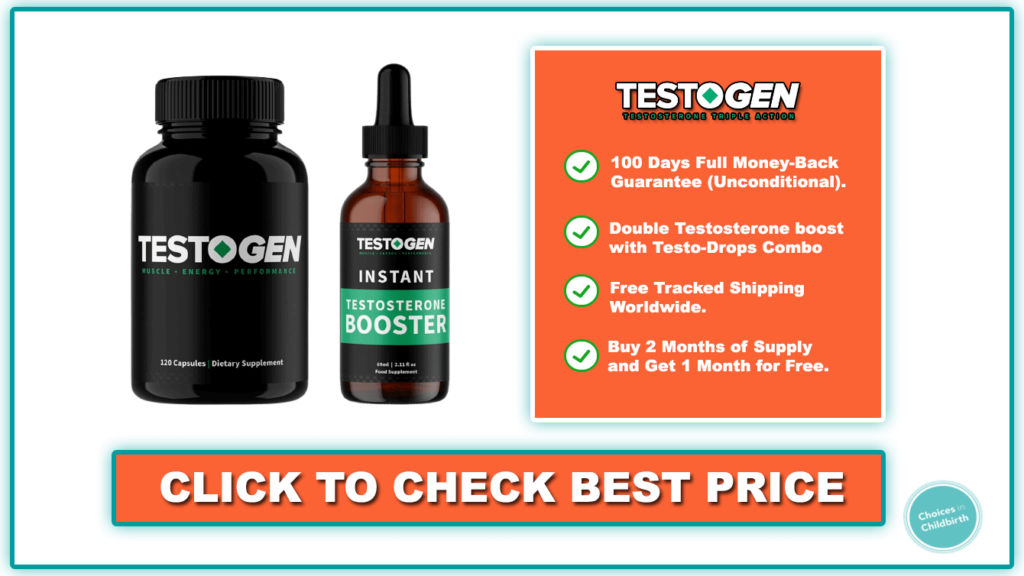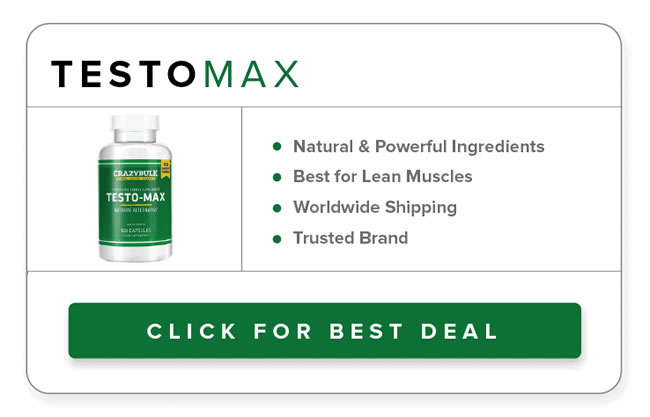Best Exercises to Boost Testosterone
Contents
- 1 Best Exercises to Boost Testosterone
- 2 Demystifying Testosterone: Understanding Its Role
- 3 The Symphony of Testosterone’s Effects:
- 4 The Downward Slide: Age-Related Testosterone Decline
- 5 Potential Consequences of Low Testosterone:
- 6 The Science Behind Exercise and Testosterone: A Powerful Link
- 7 Understanding the Nuances: Type, Intensity, and Duration
- 8 1. Resistance Training (Weightlifting): The King of Testosterone Boosters
- 9 2. High-Intensity Interval Training (HIIT): A Potent Testosterone Booster
- 10 3. Don’t Neglect Moderate-Intensity Exercise:
- 11 Summary of Exercise Types and Their Impact on Testosterone
- 12 Optimizing Your Exercises to Boost Testosterone
- 13 Beyond Exercise: A Holistic Approach to Testosterone Health
- 14 Conclusion: Empowering Yourself Through Exercise and Healthy Habits
- 15 Frequently Asked Questions
- 16 References
Testosterone, the hormone often synonymous with masculinity, plays a far more nuanced role in human health than just fueling deep voices and bulging muscles. It’s a crucial player in a symphony of hormonal interactions, influencing everything from muscle mass and bone density to sex drive, mood, and even cognitive function. As men age, testosterone levels naturally decline, leading to a potential domino effect on overall health and well-being.
Also Read: Testosterone Over the Counter | A Comprehensive Guide to Boost Your T- T-Levels
This decline isn’t inevitable, however. You can naturally nudge your testosterone levels upwards through a healthy lifestyle, and exercise plays a key role in this strategy. This comprehensive guide dives deep into the science behind exercise and testosterone, exploring the Best Exercises to Boost Testosterone and providing practical tips to optimize your workout routine.
Demystifying Testosterone: Understanding Its Role
Before delving into the world of testosterone-boosting exercises, let’s establish a solid foundation by understanding what testosterone is and how it works. Testosterone is a steroid hormone primarily produced in the testes (in men) and the ovaries (in women) in much smaller quantities. In men, testosterone production is orchestrated by a complex interplay between the hypothalamus, a region in the brain, and the pituitary gland. The hypothalamus releases gonadotropin-releasing hormone (GnRH), which signals the pituitary gland to produce luteinizing hormone (LH). LH, in turn, stimulates the Leydig cells in the testes to produce testosterone.
The Symphony of Testosterone’s Effects:
- Muscle Building and Strength: Testosterone acts as a key for unlocking muscle growth. It stimulates protein synthesis, the process by which your body builds muscle tissue. This translates to increased strength, power, and improved physical performance.
- Bone Health: Testosterone plays a crucial role in bone density and mineral content. It promotes the activity of osteoblasts, cells responsible for bone formation, and inhibits osteoclasts, cells that break down bone. This helps maintain strong, healthy bones and reduces the risk of osteoporosis.
- Sex Drive and Libido: Testosterone is a major player in the realm of sexual health. It fuels libido, sperm production, and erectile function. A decline in testosterone can lead to decreased sexual desire, erectile dysfunction, and infertility.
- Mood and Cognition: Research suggests a connection between testosterone levels and mood regulation. Testosterone may influence brain chemicals like serotonin and dopamine, which can impact mood, energy levels, and sense of well-being. Some studies also suggest a link between testosterone and cognitive function, with lower levels potentially impacting memory and focus.
The Downward Slide: Age-Related Testosterone Decline
As men age, testosterone production naturally declines. This decrease can begin as early as the late 20s or early 30s, and the rate of decline varies from person to person. While some men may experience a gradual decrease, others may have a sharper decline.
Potential Consequences of Low Testosterone:
- Decreased muscle mass and strength
- Increased body fat, particularly visceral fat around the abdomen
- Decreased bone density and increased risk of osteoporosis
- Reduced sex drive, erectile dysfunction, and infertility
- Fatigue, low energy levels
- Depressed mood, irritability, and cognitive decline
The Science Behind Exercise and Testosterone: A Powerful Link

The good news is that you can naturally support healthy testosterone levels through lifestyle modifications, most importantly, exercise. Numerous studies have explored the link between exercise and testosterone, revealing a compelling relationship between breaking a sweat and boosting your T levels. Here’s a breakdown of how exercise can impact your testosterone production:
- Muscle Building Stimulus: Resistance training, also known as weightlifting, is a potent testosterone booster. When you challenge your muscles by lifting weights, your body releases hormones like testosterone to repair and rebuild the stressed muscle tissue. This increased demand for testosterone leads to its production.
- Fat Reduction: Excess body fat, particularly visceral fat, can suppress testosterone production. Engaging in regular exercise, especially cardio, helps reduce fat mass and creates a more favorable hormonal environment for testosterone production. Exercise promotes fat-burning and improves insulin sensitivity, which can further support healthy testosterone levels.
- Improved Blood Flow: Exercise enhances blood flow throughout the body, including the testes, which are responsible for testosterone production. This better circulation can directly influence testosterone production by delivering necessary nutrients and hormones to the Leydig cells.
Understanding the Nuances: Type, Intensity, and Duration
Not all exercise is created equal when it comes to boosting testosterone. While most forms of exercise can contribute to a healthier testosterone profile, specific types, intensities, and durations seem to have the most significant impact. Here’s a closer look:
1. Resistance Training (Weightlifting): The King of Testosterone Boosters
Resistance training, involving exercises like squats, deadlifts, bench presses, rows, and overhead presses using barbells, dumbbells, or bodyweight, reigns supreme when it comes to testosterone-boosting exercise.
- Compound Lifts: These exercises, which engage multiple muscle groups simultaneously, trigger a greater hormonal response compared to isolation exercises that target single muscle groups. Squats, for example, work your quads, hamstrings, glutes, core, and even your lower back, leading to a more significant testosterone surge compared to a bicep curl.
- Progressive Overload: The principle of progressively overloading your muscles by gradually increasing weight, sets, or reps over time is crucial for continued testosterone production stimulation. As your muscles adapt to a particular weight, your body needs a new challenge to trigger further growth and, consequently, testosterone production.
- Short Rest Periods: Studies suggest shorter rest periods (around 30-60 seconds) between sets during resistance training may be more effective for maximizing testosterone release compared to longer rest periods (over 2 minutes).
Sample Testosterone-Boosting Resistance Training Workout:
This is just a sample, and you should adjust it based on your experience and fitness level. Always consult a healthcare professional before starting a new exercise program.
- Warm-up: 5-10 minutes of light cardio (e.g., brisk walking, jumping jacks) and dynamic stretches (e.g., arm circles, leg swings)
- Squat: 3 sets of 8-12 repetitions
- Deadlift: 3 sets of 6-10 repetitions
- Bench Press: 3 sets of 8-12 repetitions
- Barbell Row: 3 sets of 8-12 repetitions
- Overhead Press: 3 sets of 8-12 repetitions
- Cool-down: 5-10 minutes of static stretches (e.g., hamstring stretch, quad stretch)
2. High-Intensity Interval Training (HIIT): A Potent Testosterone Booster
HIIT workouts involve alternating short bursts of intense exercise with brief recovery periods. This high-intensity approach can be a powerful tool for boosting testosterone levels, particularly in men. Studies suggest HIIT workouts can lead to a significant, albeit short-term, increase in testosterone compared to moderate-intensity exercise. Examples of HIIT exercises include sprints, jumping jacks, burpees, and mountain climbers.
Here are some tips for incorporating HIIT into your routine:
- Intensity is Key: Push yourself during the intense intervals, aiming for an effort level of 80-90% of your maximum heart rate.
- Work-to-Rest Ratio: A common HIIT format involves short bursts of exercise (20-30 seconds) followed by brief recovery periods (10-20 seconds).
- Duration: Aim for a total workout duration of 15-30 minutes, including warm-up and cool-down.
3. Don’t Neglect Moderate-Intensity Exercise:
While resistance training and HIIT seem to have the edge in terms of testosterone-boosting effects, don’t underestimate the value of moderate-intensity exercise like brisk walking, swimming, or cycling. These activities can still contribute to a healthy testosterone profile, especially when combined with other healthy lifestyle habits like a balanced diet and adequate sleep. Additionally, moderate-intensity exercise can be a great way to improve overall fitness and cardiovascular health, which indirectly benefits testosterone levels.
Summary of Exercise Types and Their Impact on Testosterone
| Exercise Type | Potential Testosterone-Boosting Effects |
| Resistance Training (Weightlifting) | Significant short-term and long-term T-level increase, particularly with compound lifts, progressive overload, and short rest periods |
| High-Intensity Interval Training (HIIT) | Effective short-term T-level increase, especially in men |
| Moderate-Intensity Exercise (Cardio) | Modest T-level increase, particularly when combined with other healthy lifestyle habits |
Remember: Consistency is key. Aim for at least three resistance training sessions and 2-3 sessions of HIIT or moderate-intensity cardio per week to experience the cumulative benefits of these exercises on testosterone levels and overall health.
Optimizing Your Exercises to Boost Testosterone
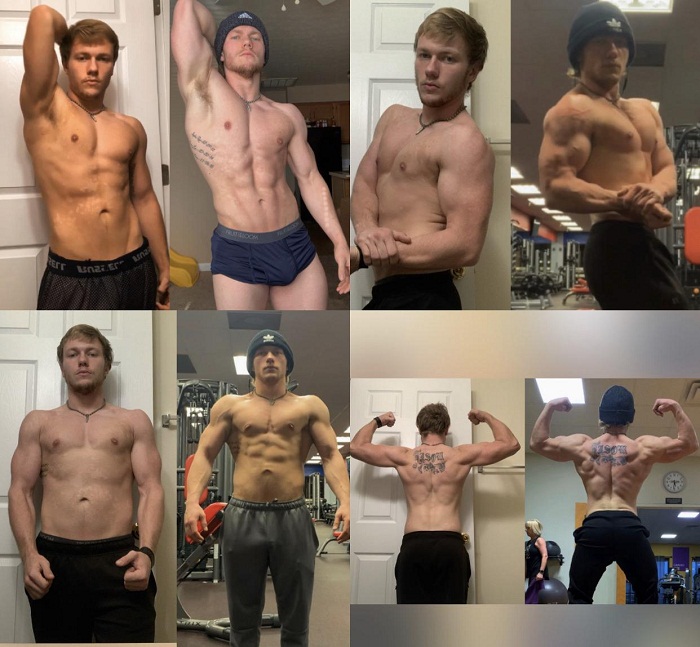
While the exercises themselves are crucial, other factors can significantly impact your testosterone response to exercise. Here are some additional tips to maximize your testosterone-boosting efforts:
- Focus on Proper Form: Using proper form during your exercises ensures you target the intended muscle groups and prevents injuries. Don’t hesitate to seek guidance from a certified personal trainer to learn the proper technique.
- Prioritize Recovery: Don’t overtrain. Allow your body adequate rest (48 hours) between resistance training workouts for muscle repair and optimal testosterone production. Listen to your body; take rest days when needed.
- Sleep for Success: Aim for 7-8 hours of quality sleep each night. Sleep deprivation disrupts hormone regulation, including testosterone. When you sleep, your body releases growth hormone, which works synergistically with testosterone for muscle growth and repair.
- Manage Stress: Chronic stress can lower testosterone levels. Manage stress through relaxation techniques like meditation, deep breathing, yoga, or spending time in nature. Finding healthy ways to manage stress can significantly benefit your overall well-being and indirectly support healthy testosterone production.
- Diet for Testosterone: Fuel your body with a balanced diet rich in whole foods, lean protein, healthy fats, and complex carbohydrates. These nutrients provide the building blocks for muscle growth and support optimal hormonal function. Limit processed foods, sugary drinks, and excessive saturated fat, as these can negatively impact testosterone levels.
- Consider Supplementation (Consult Your Doctor): Certain supplements, like vitamin D and zinc, may offer some benefits for testosterone levels, but research is ongoing. It is crucial to consult with your doctor before taking any supplements to ensure they are safe and appropriate for you.
Beyond Exercise: A Holistic Approach to Testosterone Health
While exercise is a potent tool for boosting testosterone, it’s just one piece of the puzzle. Here are some additional lifestyle factors to consider for a holistic approach to testosterone health:
- Maintain a Healthy Weight: Excess body fat, particularly visceral fat, can negatively impact testosterone production. Reaching and maintaining a healthy weight through a balanced diet and regular exercise can significantly improve your testosterone profile.
- Limit Alcohol Consumption: Excessive alcohol consumption can suppress testosterone production and lead to several health problems. Moderate alcohol consumption is generally considered safe, but it’s best to discuss this with your doctor.
- Beware of Environmental Toxins: Certain environmental toxins, such as pesticides and industrial chemicals, may hurt testosterone levels. While eliminating all exposure can be challenging, taking steps to minimize exposure whenever possible can be beneficial.
- Regular Checkups: Schedule regular checkups with your doctor to monitor your testosterone levels and overall health. Early detection of any potential testosterone deficiency allows for timely intervention and treatment options, if necessary.
Conclusion: Empowering Yourself Through Exercise and Healthy Habits
By incorporating the exercises and tips outlined above, you can create a powerful testosterone-boosting plan. Remember, consistency is key. Make exercise and healthy lifestyle practices a regular part of your life, and reap the rewards of a more vibrant and healthy you.
A Final Note: It’s important to remember that individual testosterone levels vary naturally. While some men may experience a significant rise in testosterone levels with exercise, others may see a more modest increase. The most important takeaway is that a healthy lifestyle, including regular exercise, can significantly benefit your overall health and well-being, regardless of the specific impact on testosterone levels.
Frequently Asked Questions
How do exercises help in boosting testosterone levels?
Exercises, especially strength training and high-intensity interval training (HIIT), stimulate the production of testosterone in the body. This hormone is crucial for muscle growth, strength, and overall health.
What are the best types of exercises to naturally increase testosterone production?
Compound exercises like squats, deadlifts, and bench presses are highly effective in boosting testosterone levels. These exercises engage multiple muscle groups, leading to a greater release of testosterone.
Can weightlifting and strength training effectively raise testosterone levels?
Yes, weightlifting and strength training are excellent ways to raise testosterone levels. They put stress on the muscles, prompting the body to produce more testosterone to aid in muscle repair and growth.
How often should I exercise to see a positive impact on testosterone levels?
Exercising at least 3-4 times per week, incorporating both strength training and cardiovascular exercises can help maintain healthy testosterone levels.
Are there specific exercises or workout routines that are more effective for boosting testosterone?
High-intensity interval training (HIIT) and heavy resistance training are particularly effective for boosting testosterone levels. These workouts push the body to its limits, triggering a hormonal response that includes an increase in testosterone production.
Do high-intensity interval training (HIIT) workouts help in raising testosterone levels?
Yes, HIIT workouts are known to increase testosterone levels, especially when combined with strength training. The short bursts of intense exercise followed by rest periods can have a powerful impact on hormone production.
Can aerobic exercises like running or cycling also contribute to increasing testosterone levels?
While aerobic exercises can improve overall health and fitness, they may not have as significant an impact on testosterone levels as strength training or HIIT. However, any form of exercise can contribute to a healthy lifestyle, which can indirectly support testosterone production.
How long does it typically take to notice a difference in testosterone levels with regular exercise?
It can vary from person to person, but in general, regular exercise can lead to noticeable changes in testosterone levels within a few weeks to a few months.
Are there any specific exercises to avoid that might lower testosterone levels?
Exercises that cause excessive stress or overtraining, such as long-duration cardio or extreme endurance activities, may temporarily lower testosterone levels. It’s important to balance these activities with rest and recovery.
What role does rest and recovery play in optimizing testosterone production through exercise?
Rest and recovery are crucial for optimizing testosterone production. Overtraining and insufficient rest can lead to hormonal imbalances, including lower testosterone levels.
How do compound exercises like squats and deadlifts affect testosterone levels?
Compound exercises, such as squats and deadlifts, are known to stimulate the body’s natural testosterone production. These exercises engage multiple muscle groups, which can lead to a greater release of testosterone compared to isolated exercises.
Is there a difference in testosterone response between men and women when doing these exercises?
Yes, there can be a difference in the testosterone response between men and women. Men typically have higher baseline testosterone levels and may experience a more significant increase in testosterone after exercise compared to women. However, women can still benefit from exercise in terms of overall health and fitness.
How does the duration and intensity of exercise impact testosterone levels?
The duration and intensity of exercise can impact testosterone levels. High-intensity exercises, such as heavy lifting or sprinting, are more likely to increase testosterone levels compared to low-intensity exercises. The duration of exercise may also play a role, with longer durations potentially leading to greater increases in testosterone levels.
Can regular exercise help improve testosterone levels in individuals with low testosterone?
Yes, regular exercise can help improve testosterone levels in individuals with low testosterone. Exercise, particularly resistance training, has been shown to increase testosterone levels in men with low testosterone levels.
References
Reference 1:
- Title: Various Factors May Modulate the Effect of Exercise on Testosterone Levels in Men
- Authors: Malczewska, J., Rogol-Rogol, D., & Rutkowska-Żurowska, M. (2020)
- Source: National Institutes of Health (.gov website) https://pubmed.ncbi.nlm.nih.gov/33739155/
Reference 2:
- Title: Testosterone and Exercise: effects on Fitness, Body Composition, and Strength in middle-to-older men with low-normal Serum Testosterone Levels
- Authors: Liu, W., Kniess, A. M., Xu, A., Wang, J., Ayres, J., Ding, Y., … & Sinha-Hikim, I. (2021)
- Source: American Physiological Society https://journals.physiology.org/doi/prev/20210319-aop/abs/10.1152/ajpheart.00010.2021
Reference 3:
- Title: Hypogonadism in Exercising Males: Dysfunction or Adaptive-Regulatory Adjustment?
- Authors: Hackney, A. C. (2016)
- Source: National Institutes of Health (.gov website) https://www.nm.org/healthbeat/healthy-tips/fitness/quick-dose-can-physicial-activity-affect-testosterone
Additional Resources:
For the General Audience:
- The National Institutes of Health (NIH): https://my.clevelandclinic.org/services/low-testosterone-treatment This webpage provides a general overview of low testosterone in men, including symptoms, causes, diagnosis, and treatment options.
- The Mayo Clinic: https://newsnetwork.mayoclinic.org/discussion/mayo-clinic-minute-low-testosterone-levels-can-affect-men/ This article discusses the impact of low testosterone on men’s health and well-being.
For Healthcare Professionals:
- The American Urological Association (AUA): https://www.auanet.org/guidelines-and-quality/guidelines/testosterone-deficiency-guideline This webpage offers clinical guidelines for the diagnosis and treatment of testosterone deficiency in men.
Scientific Articles:
- Effects of Exercise Intensity on Testosterone Levels in Males: https://pubmed.ncbi.nlm.nih.gov/33739155/ This research paper explores the link between exercise intensity and testosterone levels in men.
- Testosterone Therapy in Men with Age-Matched Untreated Hypogonadism: https://pubmed.ncbi.nlm.nih.gov/26846952/ This study investigates the effects of testosterone therapy in men with low testosterone.
